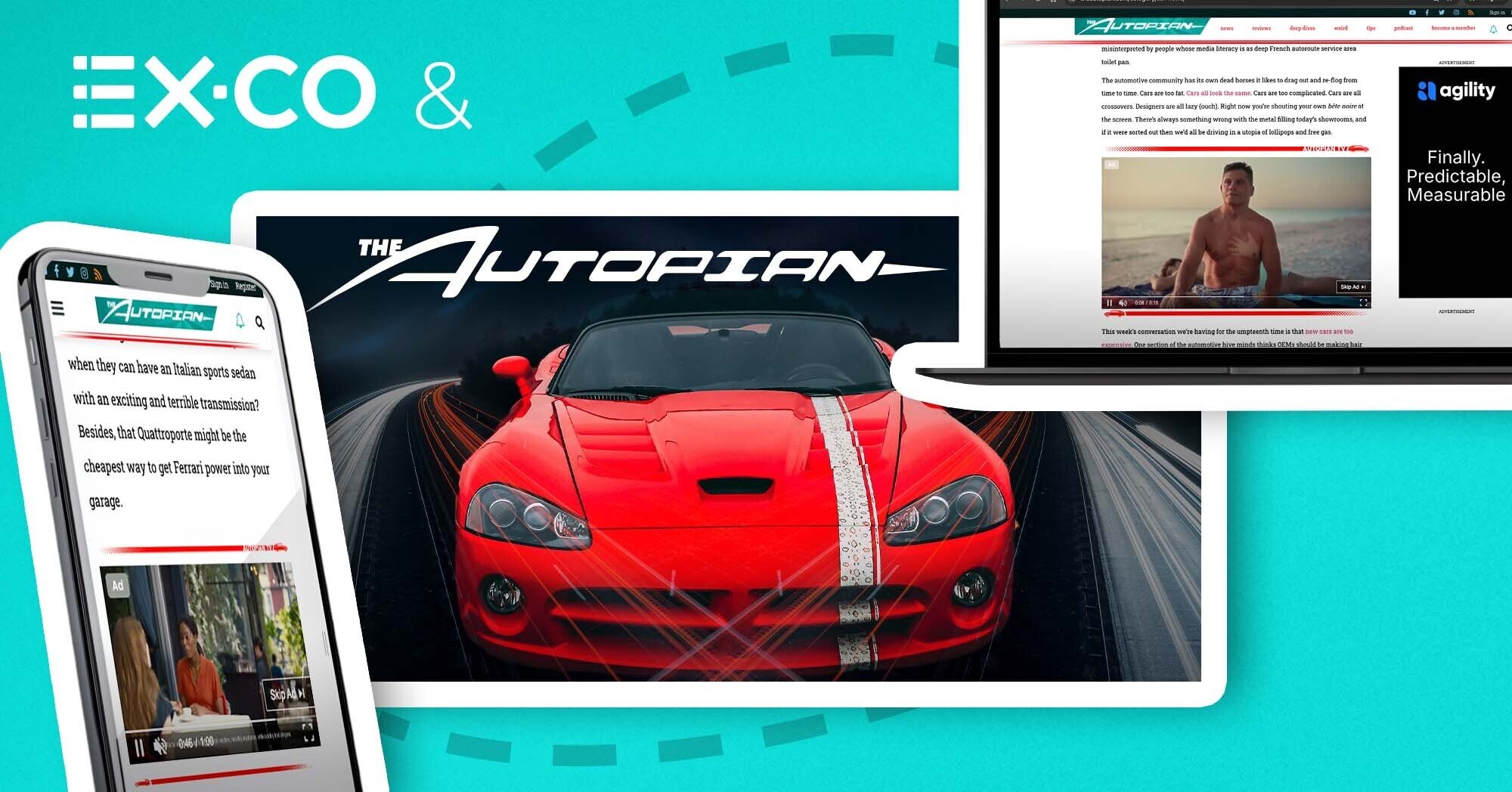If you care about cars, you know about The Autopian. Launched by Jason Torchinsky and David Tracy—the two most-read Jalopnik writers—along with prolific businessman/TV personality Beau Boeckmann, The Autopian is a daily ode to car culture, combining irreverent analysis of the day's news with deep technical expertise. Whether you're looking for offbeat riffs (for instance, an argument for how the Pope could help manufacturers circumvent tariffs) or in-the-weeds industry news, The Autopian has every aspect of the car-world covered. If it's got four (or more) wheels, The Autopian is on top of the story—and has an opinion about it, too.
In other words, The Autopian is a perfect product of our emerging new media environment: instead of trying to reach everyone, they're trying to cultivate a specific, devoted niche audience. In the three years since they've launched, they've had tremendous success on this front—along with, inevitably, their share of challenges.
Most prominently: video. The Autopian had watched as other niche sites experienced massive success with embedded video strategies. They knew that, in the age of TikTok, video was what consumers wanted—and they knew that the right video strategy had the potential to skyrocket engagement (and by default, revenue).
The key word there, of course, is right. In keeping with the rules of 2020s media, The Autopian had built an intimate relationship with their audience, and the worst case scenario would be a video strategy that damaged that relationship without even boosting revenue goals.
Nothing boosts engagement like video—but only when it's done right
The benefits of video are significant and well-established. Video deepens engagement; keeps users on-site longer; and—properly deployed—can significantly increase revenue.
The problem is that getting a serious video operation off the ground with monetization capabilities can be a nightmare for a small company. For one thing, most media companies—of any size—lack the resources to build out a large content library. Audiences are savvy—they can spot a bare-bones, underfunded video operation from a mile away. If they start seeing the same five or six low-effort videos on every page, they're going to get annoyed. Which is to say: video, done wrong, has just as much potential to alienate customers as it does to bring them in.
And the content, for The Autopian as for so many other sites, was just half the problem. There is also the matter of user experience. Audiences increasingly have little tolerance for video players that disrupt the site experience. They love video, but they don't love having it shoved in their face—they like video when it's a part of the site experience, as opposed to a distraction from it.
They also are much less likely to engage with video content when it's totally irrelevant to a given article. The Autopian—as a small operation—simply lacked the manpower to scale video across its site in a relevant, contextual way. Until they could sort all of these problems out, they would struggle to succeed with any video strategy.
Boosting engagement without harming UX
This is where EX.CO's online video platform (OVP) came in.
On the content side, EX.CO's intelligent content recommendation engine allowed The Autopian to scale video across its site without investing in a costly video operation. Through the deployment of AI, The Autopian's pages were automatically populated with videos that were—at one and the same time—engaging and relevant. This wasn't marketing filler, but rather content that The Autopian's audience would actually want to watch.
Crucially, this content was embedded without in any way harming the user experience. For an intimate, personality-driven website like The Autopian, this was essential. They'd been successful precisely because they refused to condescend to or manipulate their audience. Any video initiative would have to play by the same rules—would have to be an actual value-add, as opposed to simply a revenue play.
Soaring revenue with EX.CO
Revenue did, in fact, play a role here however. The Autopian leveraged EX.CO's machine learning-driven yield engine, which taps into direct and programmatic demand for maximum profit. Integration was fast and straightforward, supported by EX.CO's dedicated customer success team. The whole process was seamless—for both The Autopian's staff and for the publisher’s audience. There were no growing pains here: they were off to the races from day one.
The results were undeniable. The Autopian saw 32 million player loads annually. Dwell time on the webpage with a video player increased by 8%. And most importantly, year-over-year revenue increased by 27%. It's worth driving home—pun intended—that The Autopian accomplished this without needing to hire extra staff or allocate extra resources. In this nimbler, pared-to-the-essentials era of digital media, that is significant.
Consumers have no shortage of entertainment options—simply getting them to spend time outside of the walled gardens of Meta and TikTok is an accomplishment in itself. Publishers in this environment need to be doing everything in their power to keep those users on-site once they have them. As The Autopian learned—and as countless publishers continue to learn—a high impact video strategy is a foolproof way of accomplishing this goal.
Want to learn more? Read the full case study by clicking the button below.

